Prior to reading Life with Picasso, I didn’t know much about Francoise Gilot. I had heard of her, of course, knew that she came after Dora Maar, knew of her daughter, Paloma Picasso - but of the actual person, I knew almost nothing at all, except that she was the only woman who had ever left Picasso.
Now, all of that has changed.
This Christie’s article provides a good, brief introduction to the artist, and includes a few of her most striking paintings. One of my favorites is the self-portrait Etude bleue, which is featured on the cover of the New York Review of Books edition of Life with Picasso. Influenced by Matisse, Gilot used saturated blocks of color that give her paintings an uncommon vividness, though she pairs these colors with graceful lines and shapes; her work is often described as ‘lyrical’, and I think that’s the correct word to use.
She painted both abstract and representational works, and I find myself particularly drawn to her sketches, especially those she made of herself. The simplicity of them, the economy of line, is stylistically very intriguing, but they are also compellingly evocative. Self-Portrait with Patience, from 1946, would have been made around the time that Picasso finally convinced her to move in with him - small wonder that she looks so reserved and, dare I say, a little conflicted in the drawing.
She was clearly an incredibly strong person, having endured an abusive childhood (at the hands of her father) and then an emotionally and physically abusive relationship with Picasso. After she ended their relationship in 1953, Picasso destroyed the belongings and artworks she had left behind, and then tried to destroy her career as an artist, refusing to sell to galleries that worked with her and demanding that salons exclude her from exhibitions. Undaunted, she showed her work abroad instead, moving to London and eventually the US. After she published Life with Picasso (despite his attempts to prevent it’s release), he was so enraged that he refused to see their two children. She had known, of course, that there would be repercussions, but she was determined to tell her story.
What I admire most of all is Gilot’s commitment to her art, and her dedication to her own development as an artist and a person. In her book she describes the difficulty of continuing her painting while living with Picasso, as he made huge demands on her time and energy, and the ways in which she carved out space for herself and her work, even while being the primary caregiver for her two children. I feel that you can see this in her paintings - during the 1940s, when she was with Picasso, her work is smaller and more contained, perhaps reflecting the limitations on her time. Her later paintings, while at times more figurative, also seem much more expansive; whole universes are captured on the canvas.
I’ve long been fascinated by abstraction in art; the simple combination of color and shape can be so compelling. It’s also a style that often lends itself well to textiles - quilts, I have always thought, are really good examples of abstract textile art. Gilot’s work, and her exceptional use of color in particular, is really inspiring to me in this way. Even her figurative work, with its minimalist lines, makes me think of ways that I could express something similar with thread and cloth.
I don’t want to say that I find male artists a little bit uninteresting, but I am so much more fascinated by women artists. After finishing Gilot’s book, I started listening to an audiobook of Katy Hessel’s incredible manifesto, The Story of Art Without Men. So far, I’m still in chapter one, but I’ve already learned so much! (Did you know that the first artist to paint a self-portrait of themselves standing at an easel was a woman?) The innovation and strength that was required to be a female artist, in a time when women were traditionally excluded from the art world - which, it seems, is most of history - is just astounding. I’m excited to learn more from this book, especially about the contributions of women artists to the Modernist movement and abstract expressionism in particular.
For myself, I’ve been spending time exploring color and texture combinations by stitching small parabolic shapes on linen cloth.
This piece above, parabola no. 1, features hand-spun wool thread on yellow checked linen (from Merchant and Mills, obviously).
And parabola no. 2 is made from tea-dyed organic linen/cotton weaving yarn on a linen/rayon blend fabric.
I have plans for a third parabola, for which I will (hopefully) use a gigantic, 30-inch embroidery hoop that I bought years ago and haven’t been able to commit to using yet. I just need to decide on a fabric base and thread color. The intersecting lines that form the parabola are most satisfying to me when executed in wool, so I think I will be spinning more of my own thread for this project - it may take me a while!
Thank you for reading this week’s edition of the newsletter; I hope you enjoyed it! I’ll be back next week with my reading round-up for September. Talk to you soon!

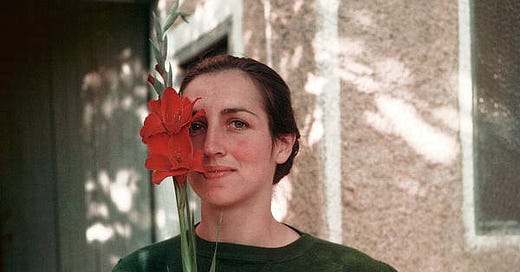



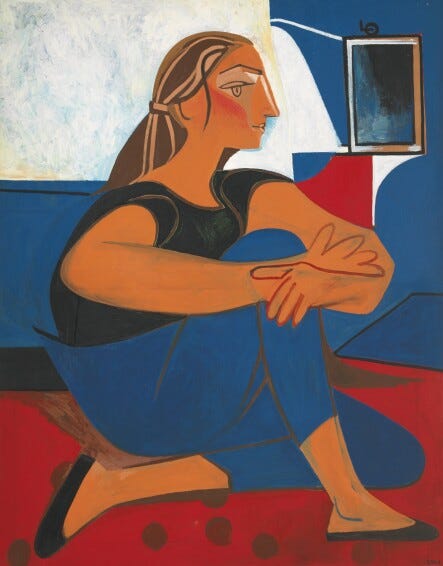
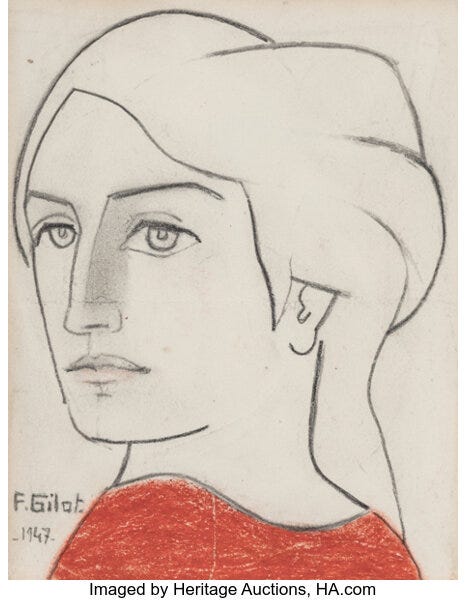
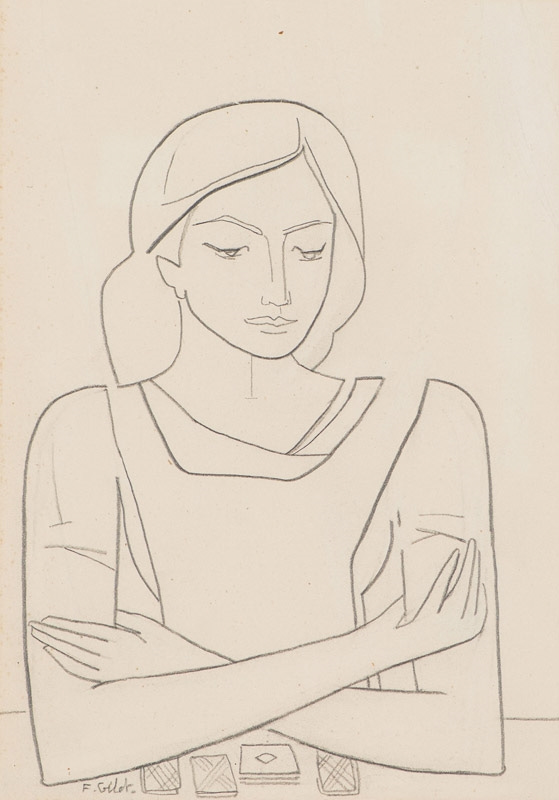
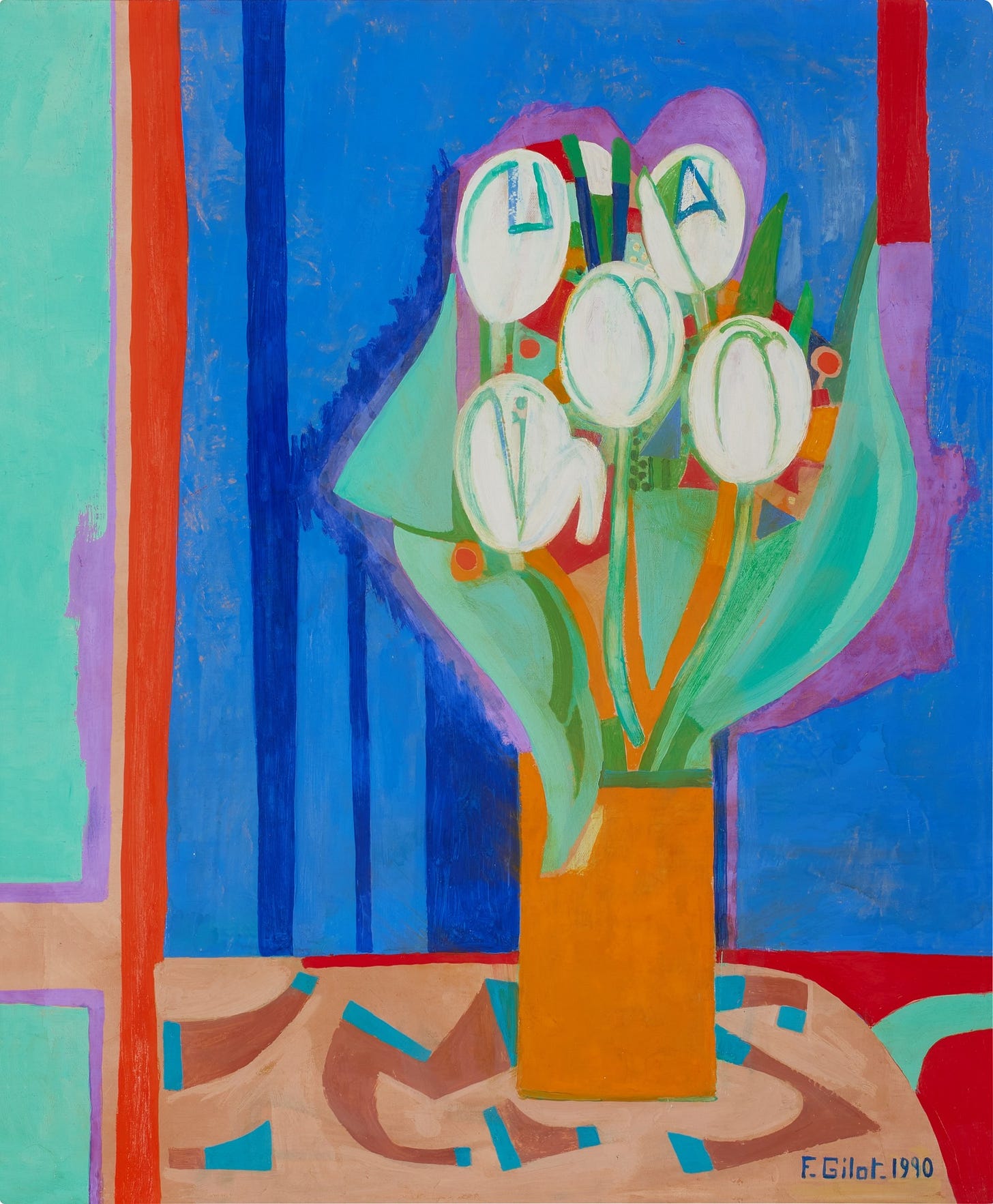
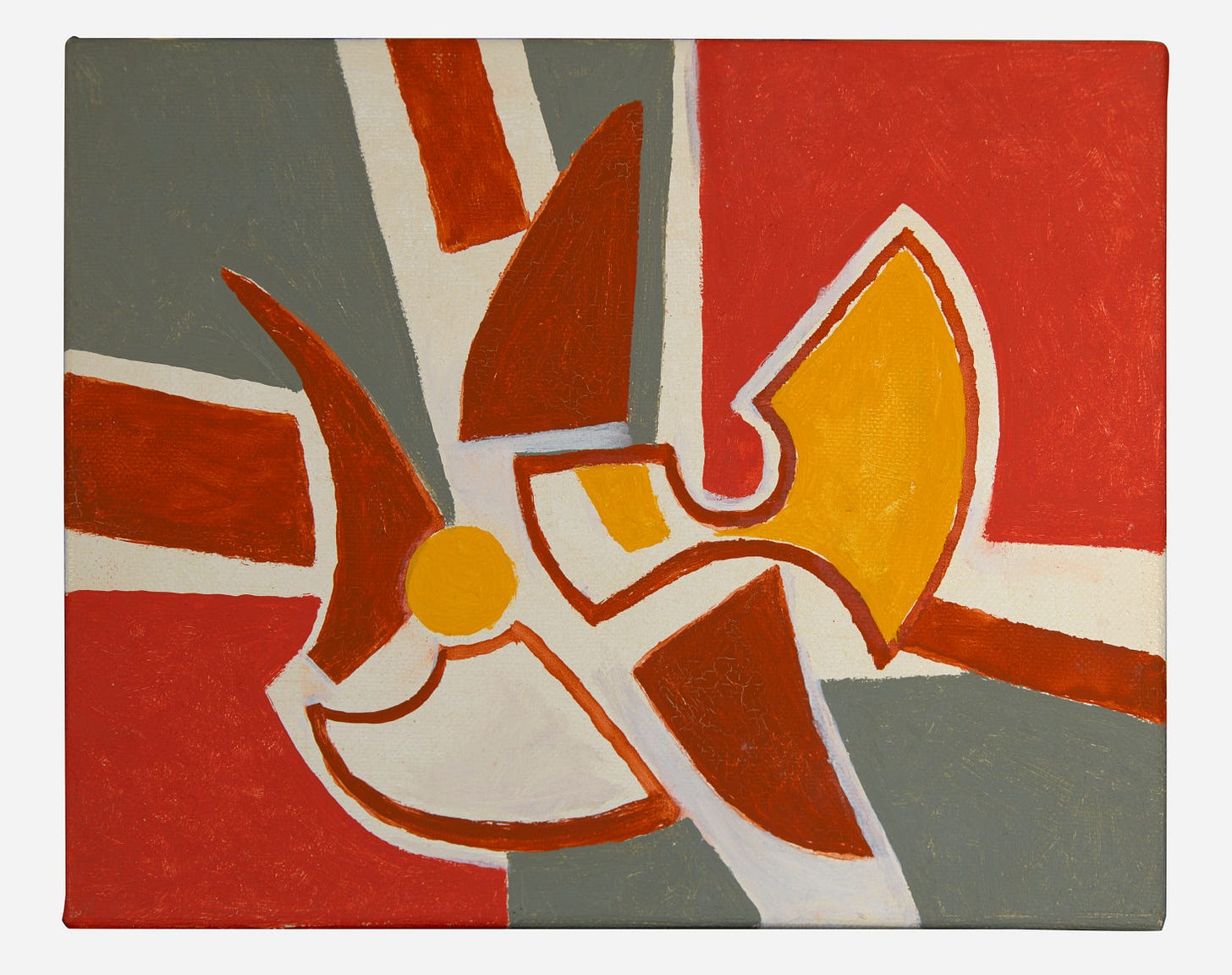

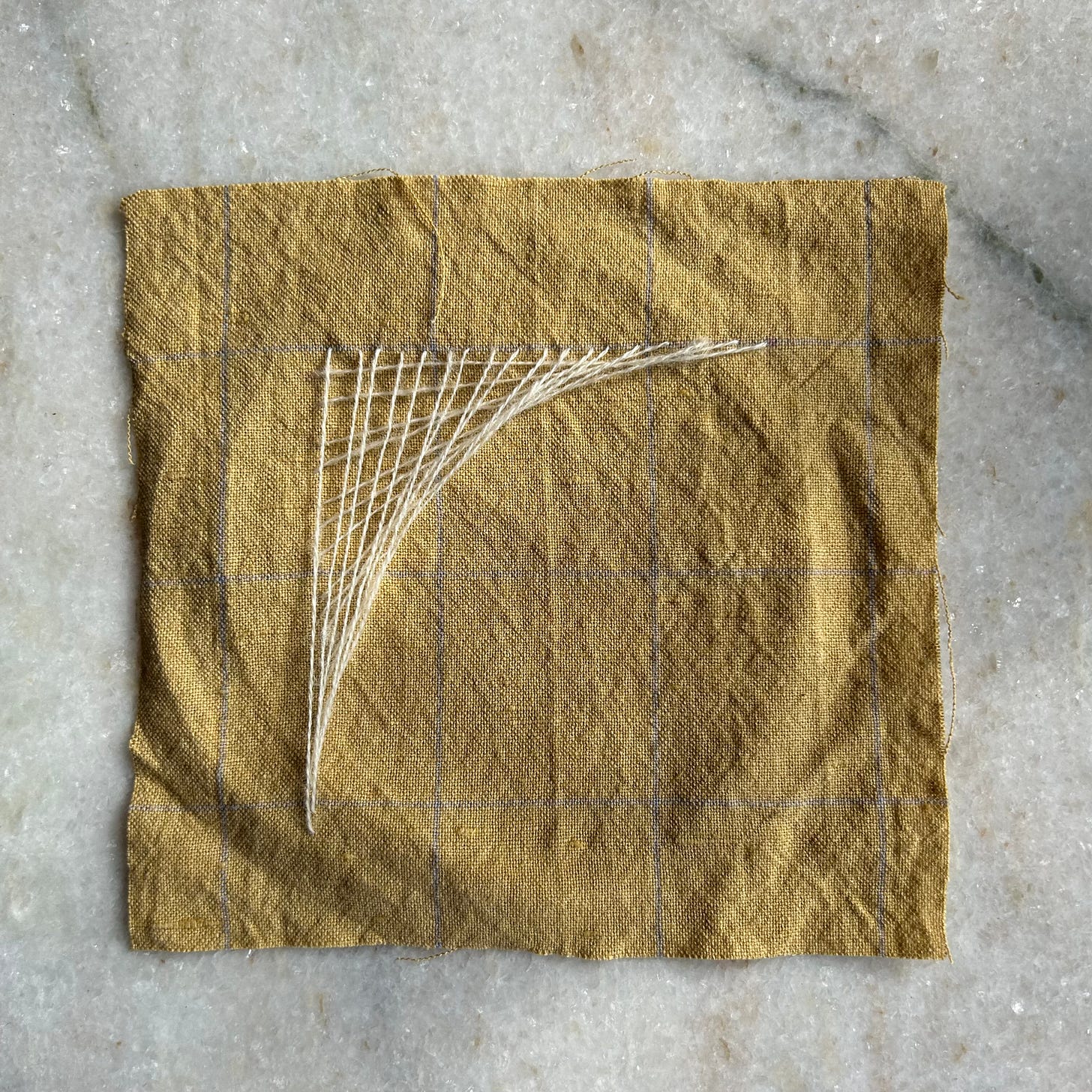
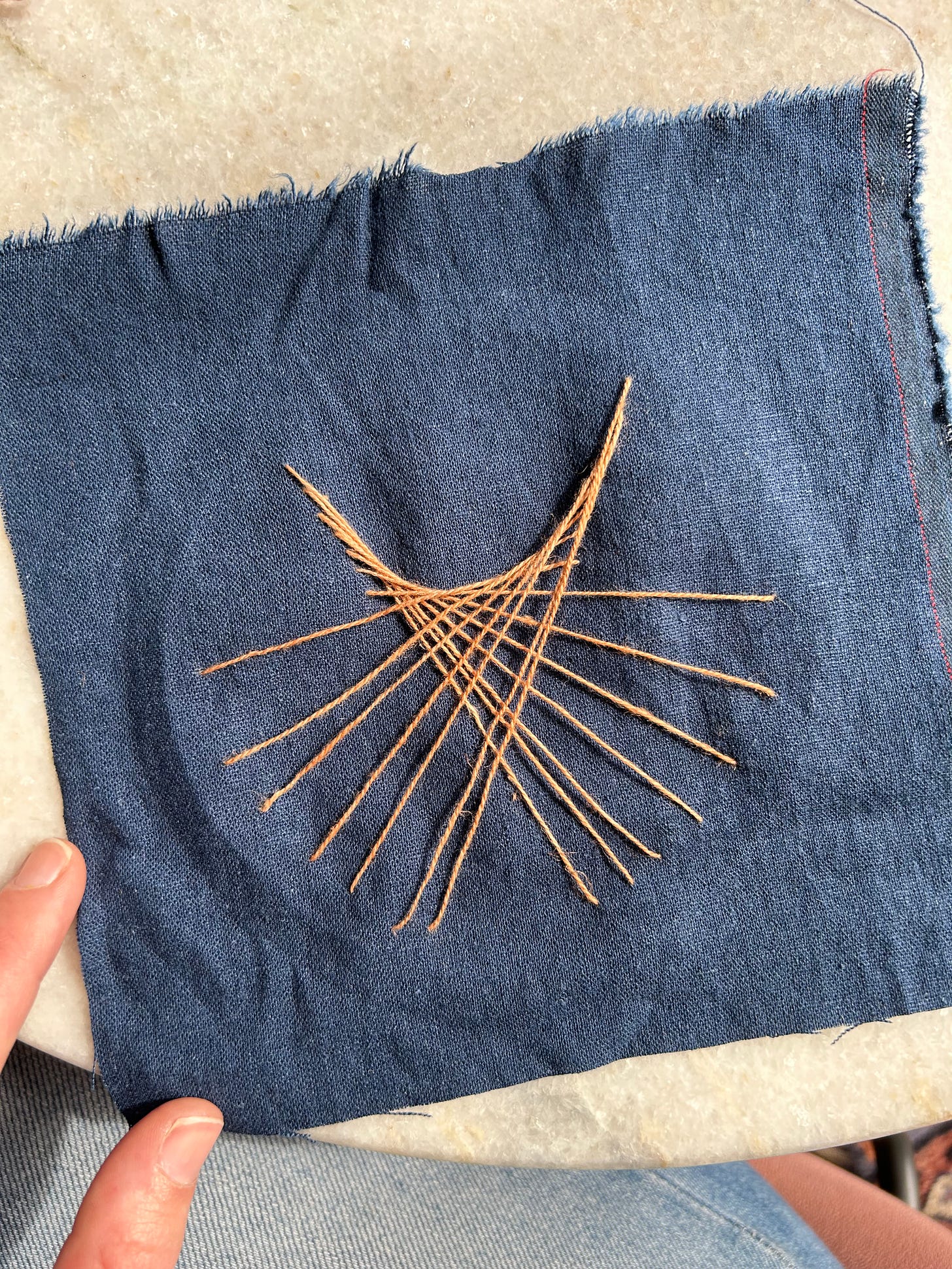

I didn't know anything about Francoise Gilot! Now I want to read her book. Her paintings here are wonderful - thank you for sharing :) I have been debating getting the Hessel book, now I feel I must!
Thank you for the book recommendations. And I love your parabolas. I appreciate the time and care you put into your textile work. And I love the colors as well.